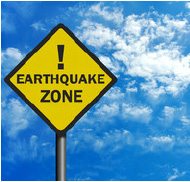A couple of weeks ago, David and I attended the ‘Seismic Engineering for Non-Engineers’ course, which was organised by the New Zealand Institute of Building Surveyors.
Presenters were Martin Webb, and James Henderson, from Frazer Thomas, and these guys covered a lot of ground, in terms of seismic loading and how we respond to this, in our buildings.
New Zealand occupies a unique geographical location, effectively sitting on the junction between two tectonic plates, and this means that seismic activity is a daily and on going occurrence.
They don’t call it the shaky isles for nothing.
As a result our engineers and architects are on the cutting edge of all number of options to address seismic issues when it comes to designing new buildings, however, there is the perception out there that older buildings are past their use-by date, in this regard.
Sure, older buildings were not required to meet the more stringent requirements we have these days, and some may be deficient in some aspects, and this can be corrected in many cases.
First up it is important to understand how the building is to be used, or reused, as this can have a bearing on the extent of upgrade undertaken.
Planning the spaces to suit the use will also direct where structural upgrade is possible, so that this does not compromise the layout, and opportunities to feature structural elements can be explored.
Undertaking an Initial Evaluation Procedure [IEP], at the same time helps to bring all this together to formulate a brief.
The good news is that there is a way forward for Owners of existing buildings, who seek professional advice before deciding the fate of their buildings.
![mitchinsonsimiona [architects]](https://myarchitects.co.nz/wp-content/uploads/sites/31/2014/10/LOGO-e1412148808468.jpg)
